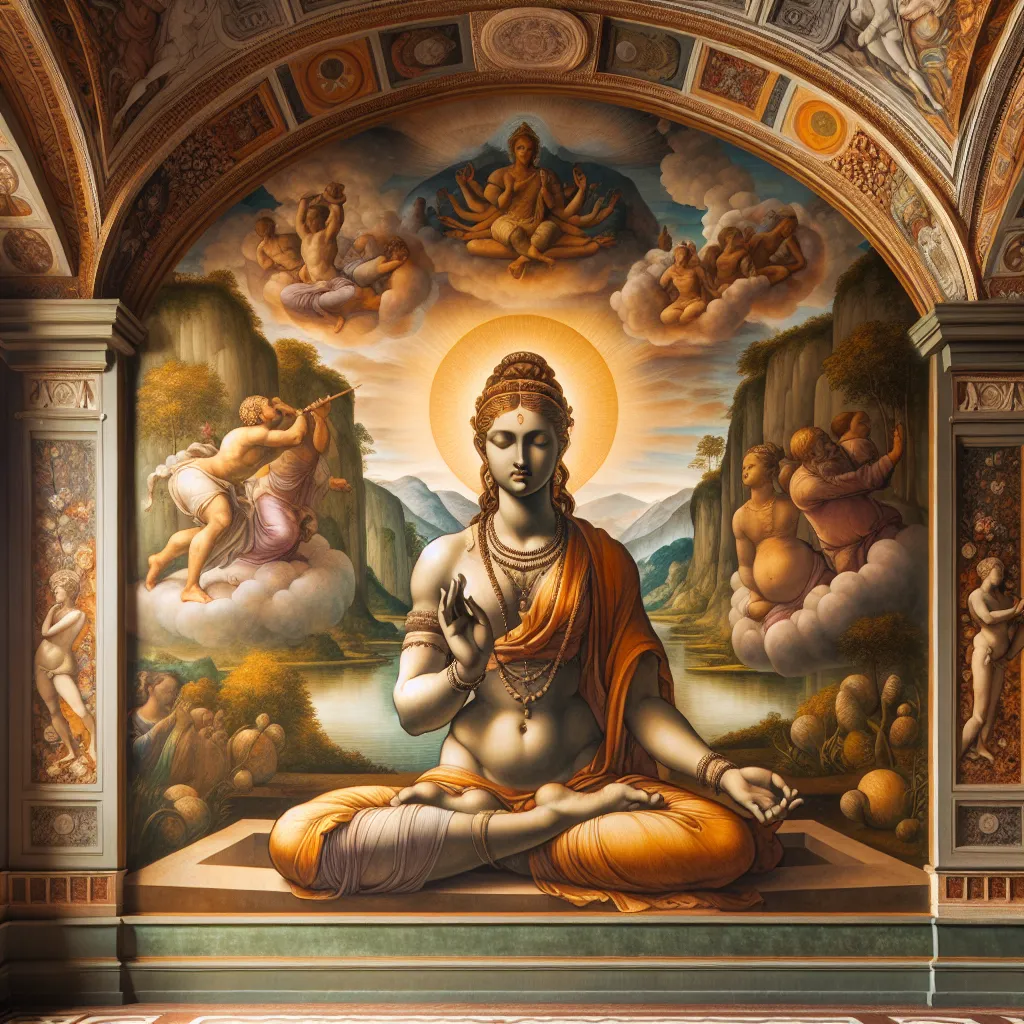
- Published on
- Authors

- Name
- You
Meditation and Yoga in Hinduism: Pathways to Inner Peace and Enlightenment
Meditation and yoga, two practices deeply embedded in the fabric of Hinduism, have fascinated scholars, sages, and spiritual seekers for millennia. In this article, we delve into the ancient techniques and modern scientific understanding of these practices, revealing their profound impact on mind, body, and spirit.
Historical Background and Spiritual Significance
The Roots in Ancient Texts
- Vedas: The earliest references to meditation and yoga can be found in the Vedas, ancient scriptures that lay the foundation of Hindu philosophy.
- Upanishads: These texts elucidate the spiritual goals of these practices, emphasizing the path to Moksha (liberation).
- Yoga Sutras of Patanjali: A key text that systematically presents the philosophy and practice of yoga.
| Text | Mention of Yoga and Meditation |
|---|---|
| Vedas | Early hymns and rituals promoting mental focus |
| Upanishads | Philosophical discourses on meditation and path to liberation |
| Yoga Sutras | Systematic guide to yogic practices |
Techniques of Meditation and Yoga
Meditation Techniques
- Mantra Meditation: Repeated chanting of a sacred sound or phrase to focus the mind.
- Vipassana Meditation: Observing the breath and bodily sensations to gain insight into the nature of reality.
- Bhakti Meditation: Devotional practice, focusing the mind on a deity or higher power.
Yoga Practices
- Hatha Yoga: Physical postures (asanas) to prepare the body for meditation.
- Kundalini Yoga: Awakening and channeling the primal energy residing at the base of the spine.
- Raja Yoga: The "royal path," encompassing meditation, ethical discipline, and mental control.
Modern Scientific Perspectives
Neurological Benefits
- Brain Plasticity: Regular meditation can enhance neural plasticity, improving cognitive flexibility and emotional regulation.
- Stress Reduction: Yoga practices significantly lower cortisol levels, reducing the physiological impacts of stress.
| Benefit | Meditation | Yoga |
|---|---|---|
| Brain Plasticity | Enhances neural connections | Improves cognitive functions |
| Stress Reduction | Lowers cortisol levels | Balances stress-response mechanisms |
| Emotional Regulation | Greater emotional stability | Reduces anxiety and depression |
Pathways to Enlightenment
Both meditation and yoga serve as pathways to achieving inner peace and spiritual enlightenment. They help dissolve the ego, unite the practitioner with their true self, and foster a deep connection with the universe.
Key Milestones on the Spiritual Journey:
- Self-Realization: Understanding one's true nature beyond the physical body and mind.
- Inner Peace: Attaining a state of tranquility unaffected by external circumstances.
- Moksha: Liberation from the cycle of birth and death, merging with the divine consciousness.
Conclusion
Meditation and yoga, with their rich historical roots and profound scientific validations, continue to be transformative practices in the journey of self-discovery and enlightenment. By bridging ancient wisdom with modern science, we uncover a holistic understanding that resonates with seekers from all walks of life.
Further Reading
- Bhagavad Gita - An epic dialogue revealing the essence of yoga and meditation.
- Mindfulness Research - Investigating the neurological impacts of meditative practices.
- Yoga and Neuroscience - Exploring the connections between yoga practices and brain health.
May your journey through the realms of meditation and yoga lead you to the heights of inner peace and spiritual enlightenment.
